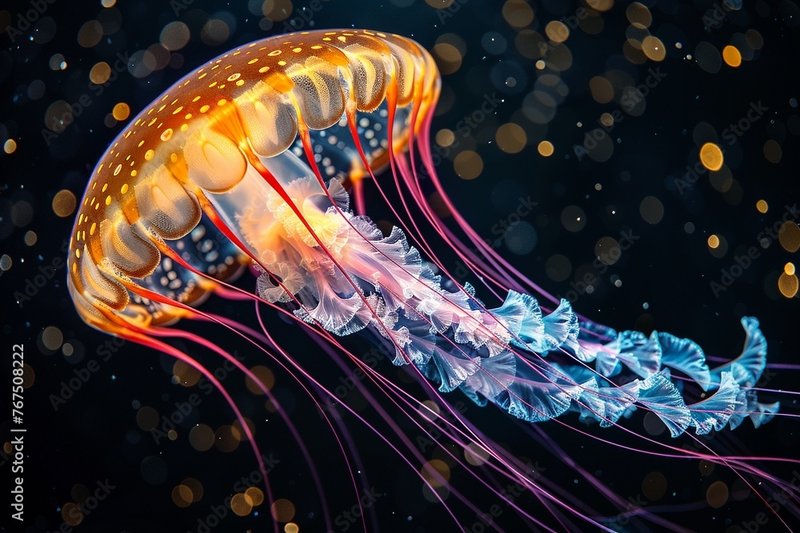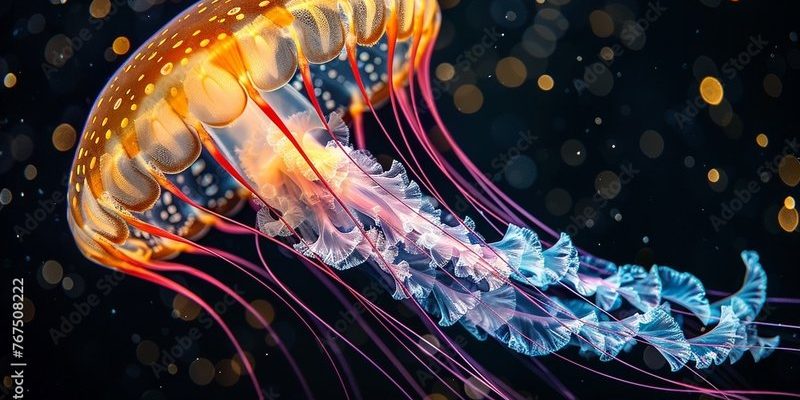
So, what exactly do jellyfish do in their watery world? Well, they help maintain the balance of marine life, functioning as both prey and predator. Their presence indicates the overall health of the ocean. Just as a canary in a coal mine warns of danger, jellyfish populations can signal changes in the ecosystem. Let’s dive deeper into their fascinating role and discover how these simple creatures are anything but ordinary.
Jellyfish as Nutrient Cyclers
One of the most crucial jobs jellyfish perform is regulating nutrients in the ocean. When jellyfish die, they sink to the seabed, where their bodies break down and release valuable nutrients back into the water. This process helps nourish the surrounding marine life, including fish, sea turtles, and various microorganisms that play essential roles in the food web.
Imagine this nutrient recycling as a cycle similar to composting in your garden. Just as organic waste breaks down and enriches the soil, dead jellyfish nourish the ocean floor. This is vital for maintaining healthy ecosystems, as nutrients fuel the growth of phytoplankton, which forms the base of the marine food chain. Without jellyfish, many creatures in the ocean would struggle to find enough nutrients to thrive.
Jellyfish as Prey: A Food Source
Jellyfish are vital prey for many marine animals. They serve as a tasty snack for fish, sea turtles, and even some birds. For instance, the leatherback sea turtle primarily feeds on jellyfish. You might see these turtles gliding through the water, their massive bodies searching for a delightful jelly treat.
What’s interesting is that jellyfish populations can swell rapidly, sometimes leading to what’s known as a “jellyfish bloom.” These blooms can provide a significant food source for predators in the area. However, large swarms can also lead to overfishing and depletion of other species. It’s a reminder of how interconnected ocean life is, where one creature’s abundance can impact many others.
Jellyfish as Predators
While jellyfish are often the prey themselves, they are also skilled predators. They capture small fish and plankton with their tentacles, using specialized cells that sting and paralyze their prey. This ability helps keep certain populations in check, maintaining a balance in the ecosystem.
Think of jellyfish as the cleaners of the ocean, munching on smaller creatures that might otherwise overpopulate and disrupt the food chain. By controlling these populations, jellyfish indirectly support the growth and health of marine species, including those we value for fisheries and ecosystems.
Indicators of Environmental Change
Jellyfish populations can fluctuate based on environmental conditions, making them important indicators of ocean health. When jellyfish numbers increase, it often signals changes in water temperature, salinity, and nutrient levels. Rising sea temperatures, for instance, can lead to more jellyfish blooms.
This connection to environmental health is like a weather vane for the ocean. If jellyfish thrive, it could indicate that conditions are changing, often not for the better. Scientists monitor these populations to better understand how climate change and pollution affect marine ecosystems, making jellyfish unwitting sentinels for our oceans.
The Impact of Climate Change on Jellyfish
As global temperatures rise, jellyfish populations are on the move. Warmer waters can create ideal conditions for jellyfish blooms, often at the expense of other marine life. This can lead to imbalances in the ecosystem, as predators may struggle to find other food sources.
Additionally, rising carbon levels can lead to ocean acidification, affecting the overall health of marine habitats. This chain reaction underscores the delicate balance of ocean life. Here’s the thing: jellyfish might be a small part of the vast ocean, but their survival hinges on the health of their environment. If we want to keep jellyfish populations stable, we need to focus on protecting their habitats from pollution and climate change.
Human Interaction with Jellyfish
Humans impact jellyfish populations too. Overfishing, coastal development, and pollution can disrupt their natural habitats and food sources. Interestingly, some coastal communities even rely on jellyfish as a food source, particularly in parts of Asia where jellyfish salads are popular.
However, excessive jellyfish blooms can harm fishing industries. When jellyfish overrun areas, they can clog fishing nets and damage local fisheries. This creates tension between conservation efforts and commercial needs. Understanding jellyfish helps us navigate these challenges, promoting healthier oceans while supporting local economies.
Jellyfish might appear delicate and simple, but they play a dynamic and multifaceted role in marine ecosystems. From nutrient recycling to becoming vital food sources and indicators of environmental health, they’re integral to ocean life. Appreciating their role is crucial as we strive to protect our oceans from the many challenges they face today.
By raising awareness about the importance of jellyfish, we can encourage better practices that safeguard both them and the broader marine environment. So next time you see a jellyfish floating along the shore, remember: it’s not just a pretty sight, but a key player in the health of our oceans. Let’s continue to learn about these fascinating creatures and recognize their important role in the underwater world!

